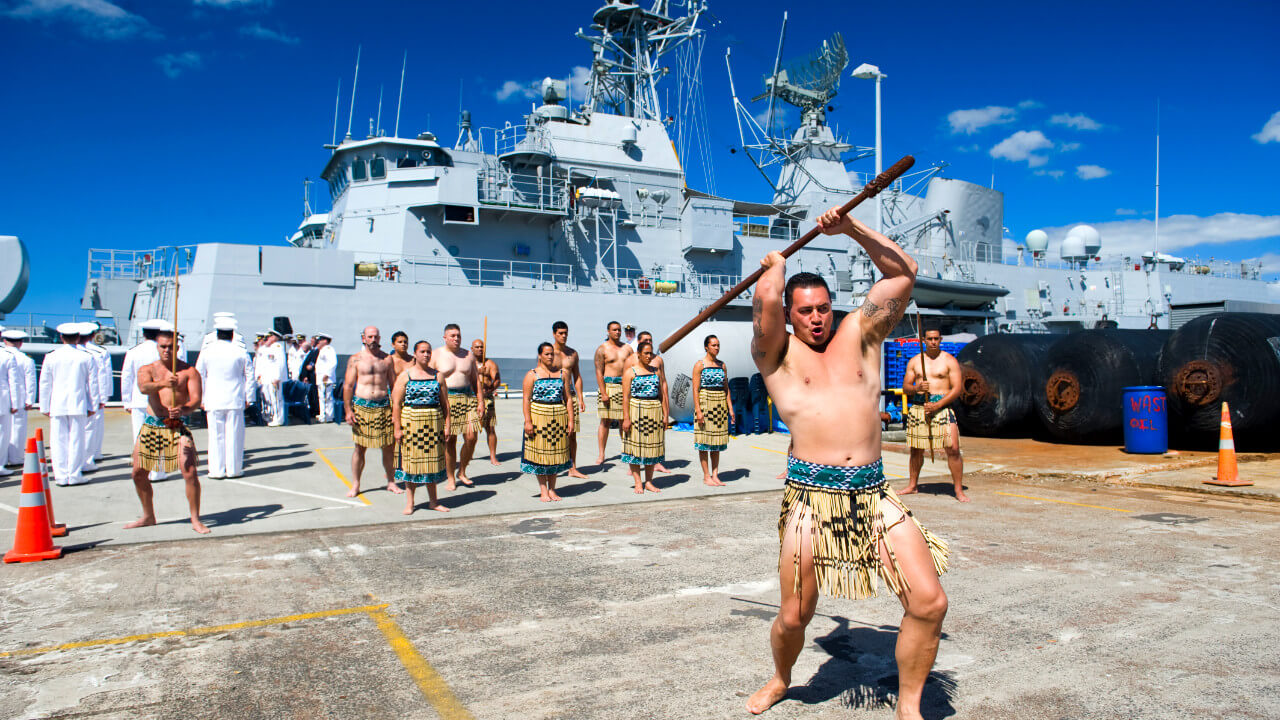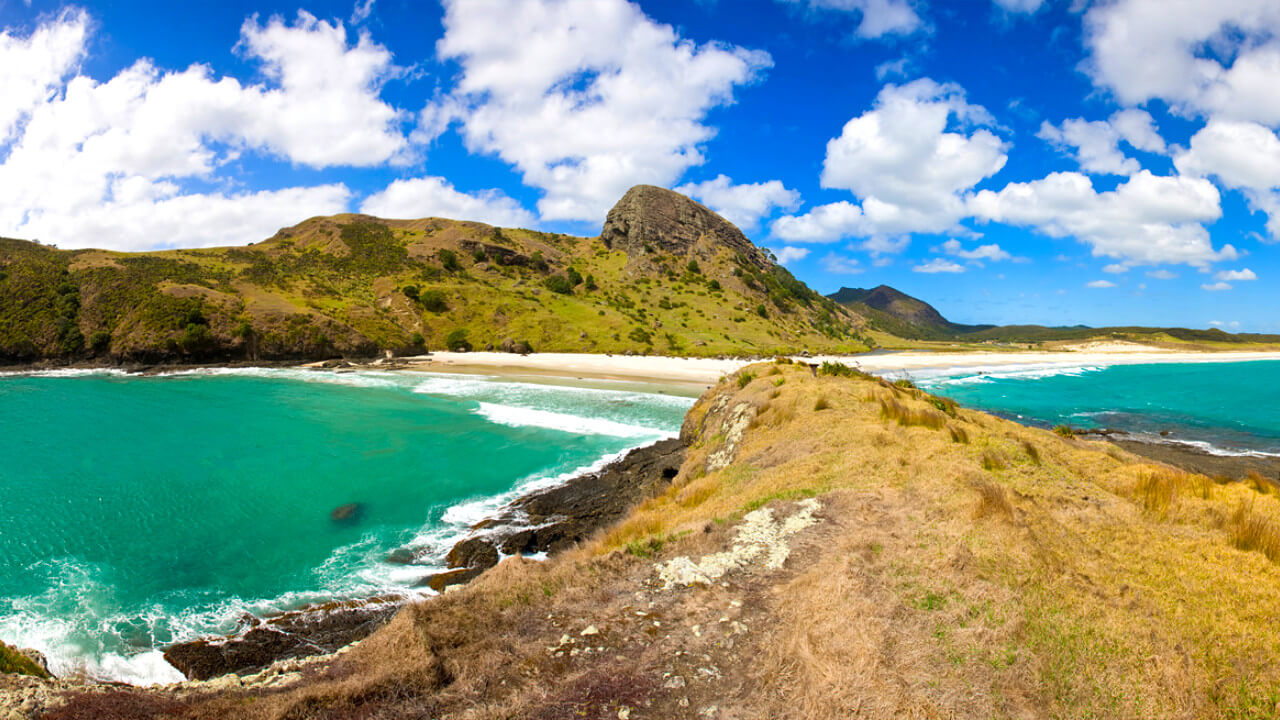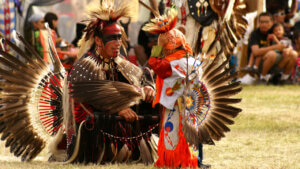New Zealand
Maori Funerals, Tapu & Ancestral Spirits
Introduction
New Zealand, also known by its Maori name Aotearoa, is home to over 770.000 Maori individuals. This article explores their death myths, beliefs and practices.
Starting off, Maori creation myths also explain the role of death and the underworld for humans. After that, we focus on how a common Maori funeral, or tangi, takes place. In order to do that, we explore different Maori terms related to death. Additionally, we follow the timeline of a funeral and discuss the importance of the marae and the pōwhiri, the meeting house and welcoming ceremony, respectively.
Additionally, this article covers expression of grief, burials and cleansing rituals within Maori communities. Thereafter, we discuss more the importance of ghosts and spirits in regards to the Maori understanding of death. That includes spirit possessions, death omens and cleansing rituals. Finally, we briefly discuss the funeral practices of early European settlers, including water burials.
Death in Maori Mythology & Beliefs

Also every civilization and culture has ideas, beliefs or myths regarding the birth of humankind. Traditional Maori beliefs follow that pattern too. Interestingly, death also plays an important role in Maori creation myths. Specifically, this is mostly present in the story of the deity Tāne Mahuta who made the first woman from soil. After that he also fathered a daughter with her called Hinetītama. Tāne Mahuta did not stop there, however. After concealing his relation to Hinetītama, he also had children with her – birthing humanity.
Once she realized the true identity of Tāne Mahuta, she fled to the underworld, shocked by the incestuous act. There she also renamed herself Hinenuitepō, (or Hine-nui-te-pō) literally translating to Great Woman of the Night. As a result, she became the true Goddess of the night, underworld and even death. This way she also remained connected to her human children since she would welcome them to the underworld after they died.
Hawaiki: Underworld or Afterlife?
But what is exactly the Maori notion of an underworld? Many Maori groups of New Zealand use the term Hawaiki to describe the underworld. It is indeed a place of death, true to its ancient conceptions. At the same time though, Hawaiki is the home of the ancestral souls – close to Western ideas of an afterlife. Although it might seem so, there is actually no contradiction with the idea that Hawaiki is both the traditional underworld and a more modern afterlife for souls and spirits.
The specificity of the Maori afterlife and underworld, indicates that death is an important moment for the community. How do Maori funerals actually take place?

Tangihanga: Maori Funerals
Traditional Maori funerals are called Tangihanga, usually simply referred to as tangi. Not all Maori communities follow these funeral rites, but most still do. Certain characteristics of the tangi often depend on the iwi (tribe or clan) of the deceased. There are though many elements that are almost always present at a tangi. For instance, the process usually lasts three days and finishes with the burial of the deceased.
Tūpāpaku & Tangi
It is also worth learning more about Maori terminology related to death. This way we can appreciate more the care and thought embedded in Maori funerary customs and beliefs.
First of all, the Maori word tūpāpaku refers to the dead body of a member of the community. Moreover, it is of importance that somebody stays with the tūpāpaku at all times. Specifically, the grieving family (‘whānau pani’ or ‘kirimate’) remains guard by the tūpāpaku. The kirimate are also dressed in black and they may wear kawakawa wreaths on their heads. Kawakawa is only endemic to New Zealand, after all. Furthermore, it is common that kirimate adorns the coffin with flowers and pictures of the dead.

Marae, Wharenui & Pōwhiri
Upon death, hospitals or funeral homes transport the tūpāpaku to the marae. The Marae plays a crucial role in Maori funerals. Generally speaking, it refers to a communal place of ritualistic significance not only for New Zealand Maori but for many Polynesian communities.
Additionally, most marae of Polynesia were unfortunately destroyed with the arrival of Christianity during the 19th century. However, to the Maori of New Zealand, the marae is still a crucial part of life: meeting point, religious and culture center but also site of rituals. Unsurprisingly, a marae is significant during death as well.
The marae itself is actually a plot of land that has been cleared of trees or bushes. Furthermore, in the heart of a marae lies the meeting house – wharenui, translating to big house. It is also there that relatives place the coffin with the tūpāpaku. The body then remains for approximately two days in the wharenui and the coffin is usually open.

Traditional Rituals
Another important element is that the community welcomes the tūpāpaku to the wharenui with a traditional pōwhiri. Also referred to as pōhiri, this is a general welcoming ritual of the Maori. Furthermore, traditional singing and dancing are common during a pōwhiri and so is the hongi.
This is the famous Maori greeting that includes two people touching noses. The pōwhiri is reserved as the most respectful form of welcoming. As a result it takes place only for very honorable visitors or, alternatively, during special events. Therefore, the fact that the community performs a pōwhiri for the tūpāpaku only shows how serious showing honor and respect to the dead is for Maori.
Expressing Grief & The Spirit’s Journey
During the three days that the tūpāpaku stays at the wharenui, relatives living far away get the chance to join. A unique, perhaps, trait of Maori funerals is that people are encouraged to speak honestly about the dead. In other words, not only praising them, but also addressing their shortcomings. In addition to that, both women and men are actively participating, showing grief. That is dissimilar to many other funerary contexts, where women are usually expected to express grief.
Showing one’s grief is often accompanied by discussing older traditional beliefs. For example, it is common for Maori mourners to mention Hawaiki and how the deceased is turning into an ancestor. This process is referred to as the journey of the spirit or te rerenga wairua. Another custom suggests that some close relatives may remain completely silent. Additionally, when leaving a wharenui people should ritualistically wash their hands and sprinkle some clean water on their foreheads.

Burials & Karakia
During the pō whakamutunga – the final night that the tūpāpaku is at the wharenui certain traditions take place. Firstly, there is a wake and then the attendees close the coffin indicating that the time for the burial has arrived. Pō whakamutunga is meant to be an opportunity for rest for the mourners before the burial. This occurs either around midnight or sunrise depending on the iwi of the deceased. What follows next is usually a Christian ceremony and burial. Moreover, few Maori hold the final funeral rites at the marae instead.

The burial is followed by more ritualistic washing of hands and a hākari, a funeral feast. Furthermore, most mourners bring gifts (‘koha’) to the grieving family to thank them for the dinner. Interestingly, someone always stays with the spouse of the deceased for the following days. Thereafter, more ritualistic cleansing takes place. This time, however, relatives cleanse the house of the deceased and the site of death. In order to achieve that they chant karakia – special prayers – but also through a special ritual called takahi whare.
Literally translating to trampling the house, this ceremony assures that no spirit will cause harm to the living. It also removed the tapu of death from the property and the family associated with it. What is a tapu, though?
Tapu, Ghosts & Ancestors
For many Maori communities it remains common to practice the Polynesian traditions of tapu and noa. Tapu refers to an object, practice or even a location that is spiritually forbidden or out of bounds. A tabu becomes noa when the appropriate ceremonies or rituals have taken place successfully. For instance, a simple example of tabu is removing your shoes when entering a wharenui. This way you can show the appropriate respect to the ancestral spirits associated with that meeting house.
A particularly fascinating tapu focuses on kehua, translating to spirits or ghosts. In other words, speaking of spirits is not encouraged. At the same time though, there are plenty of references to ghosts and spirits in Maori myths. Additionally, these ghosts often are ancestral spirits according to these traditions. Their purpose is to also function as an omen of death or as a warning for an upcoming disaster.

Death Omens – Spirit Canoe
One of the most famous instances that potential spirits functioned as a warning for the volcanic eruption in 1886 took place close to Lake Tarawera. The story goes that eleven days prior to the eruption, a boat with tourists saw a traditional war canoe of Maori origins. Although the canoe was nearing the boat, it suddenly disappeared with no explanation in the fog. One of the passengers was a Maori guide and immediately recognized the war canoe as such. Interestingly though, he said that these canoes are not used by any Maori tribe of the area anymore. When other Maori heard about the canoe they reportedly named it a waka wairua or spirit canoe. They additionally interpreted it as an omen of destruction.
Researchers suggest that an old canoe that was at the bottom of the lake actually rose to the surface. That would be indeed possible since any seismic activity prior to the eruption could have moved the bottom of the lake. Moreover, local tribes used water burials, on special burial canoes. Although these are all very rational explanations of what the tourists saw, many locals believed this to be an omen of destruction.

Spirit Possession & Cleansing Rituals
Spiritual canoes are by far not the only ghostly apparitions in Maori beliefs. For example, kikokiko are malevolent spirits that can even possess individuals until they drive them insane. Perhaps this is why ghosts and spirits are often a tapu. As a result Maori go to great lengths to ensure that certain places are cleansed.
For instance. we have already mentioned washing one’s hands and forehead, as well as the takahi whare ritual. These are prime examples of simple or very elaborate ceremonial practices that aim to spiritually cleanse a person or a location closely associated with death.
There are of course more similar purification practices. For instance, the tūpāpaku needs to be returned to the family as soon as possible after death so they can start the preparations for all these rituals. Maori traditions suggest that the family needs to help the soul of the deceased to reach the ancestral afterlife. If that does not occur the dissatisfied dead may take someone else with them.

Spiritual Euthanasia
Another particularly interesting death ritual is the tuku wairua. This could almost be described as spiritual euthanesia. For instance, if local Maori priests thought that a person was beyond saving and they were very close to death they would perform this ritual. As a result they believed that they were helping the spirit to exit the body. As a result the sick person would be in peace and their soul would not turn into an angry spirit.
In modern times tuku wairua still takes place, albeit in a different way. Firstly, there is also a Christian, usually, cleric present during the process. Moreover, it is the family now that is in charge of tuku wairua and not a Maori priest. Due to the importance of ancestors, Maori often perform graveside remembrance ceremonies in order to pay their respects.
European Settlers

Early Europeans settlers in New Zealand often worked as sealers or whalers. In this case, they often buried their dead next to their whaling stations. Alternatively, they performed water burials, disposing of the body in the sea. European cemeteries started being used around the early or mid-19th century. Most of these public burial sites had gravestones detailing how the occupant of the grave died. Sometimes the gravestone also mentioned where they originally came from, the name of the ship they had boarded and/or the port they first arrived at.
Additionally, Europeans buried their dead in the same public cemeteries regardless of their religion. However that was already not the case by the mid-19th century, with different religious burial grounds being established. By the 20th century, most burial sites (or ‘urupā’) started to also include water. This way people could wash their hands – something particularly important to Maori.
Read more
We hope you learned something new regarding this country’s death practices!
If you want know more about funeral practices of other neighboring countries, feel free to check out our articles on Australia and Papua New Guinea. For articles on additional indigenous death beliefs and practices have a look here: Native American & Canada’s First Nations.
Stats & Facts
The average mixed death rate of New Zealand is 6,87 per 1.000 people (2019).
Traditionally, Maori funerals last three days. Customs dictate that burials take place at the end of that period, thus three days after death. However since most funerals are secular or Christian burial customs are adjusted to that.
The majority of New Zealanders are not religious (48,6%) according to the 2018 census. Additionally, Christianity is the most dominant religion and second biggest group (37%) of that census. Hinduism comes next (2.6%) and the rest of the population practices various religions. Finally, most Maori people are actually Christians, with very few practicing traditional beliefs – almost 4.000 people.
According to the Australia & New Zealand Organ Registry, the rate of utilized organs in 2019 was 12,40 per million population. That corresponds to 61 transplants in that year.
Life expectancy
- Burials & Cemeteries – New Zealand
- Cremation – New Zealand
- Crude Death Rate / New Zealand – World Bank
- Ghosts and spirits in Māori culture
- Hine-nui-te-pō
- Māori mythology
- Māori people – Belief & religion
- Marae
- New Zealand – International Registry In Organ Donation And Transplantation
- Pōwhiri
- Religion in New Zealand
- Spirits Bay
- Tangihanga
- Tangihanga – death customs – R. Higgins
- Tapu – Polynesian Culture
- Wharenui
- U.S. Air Force photo/Tech. Sgt. Shane A. Cuomo, Public domain, via Wikimedia Commons
- Falco, Pixabay License, via Pixabay
- © Jorge Royan / http://www.royan.com.ar, via Wikimedia Commons
- Chris Gin, CC BY 2.0, via Flickr
- RaviGogna, CC BY 2.0, via Wikimedia Commons
- New Zealand Defence Force from Wellington, New Zealand, CC BY 2.0, via Wikimedia Commons
- JSilver, CC BY 2.0, via Flickr
- Barni1, Pixabay License, via Pixabay
- Mike Dickison, CC BY 4.0, via Wikimedia Commons
- mickeyshih, Pixabay License, via Pixabay
- Williamsphotographynz, CC BY 3.0, via Wikimedia Commons
- Auckland Art Gallery, Public domain, via Wikimedia Commons
- holgerheinze0, Pixabay License, via Pixabay
- Jeffraines, Pixabay License, via Pixabay
- Tony Hisgett, CC BY 2.0, via Wikimedia Commons
- Abider, Pixabay License, via Pixabay
- © Jorge Royan / http://www.royan.com.ar, via Wikimedia Commons
- W. Bulach, CC BY-SA 4.0, via Wikimedia Commons











